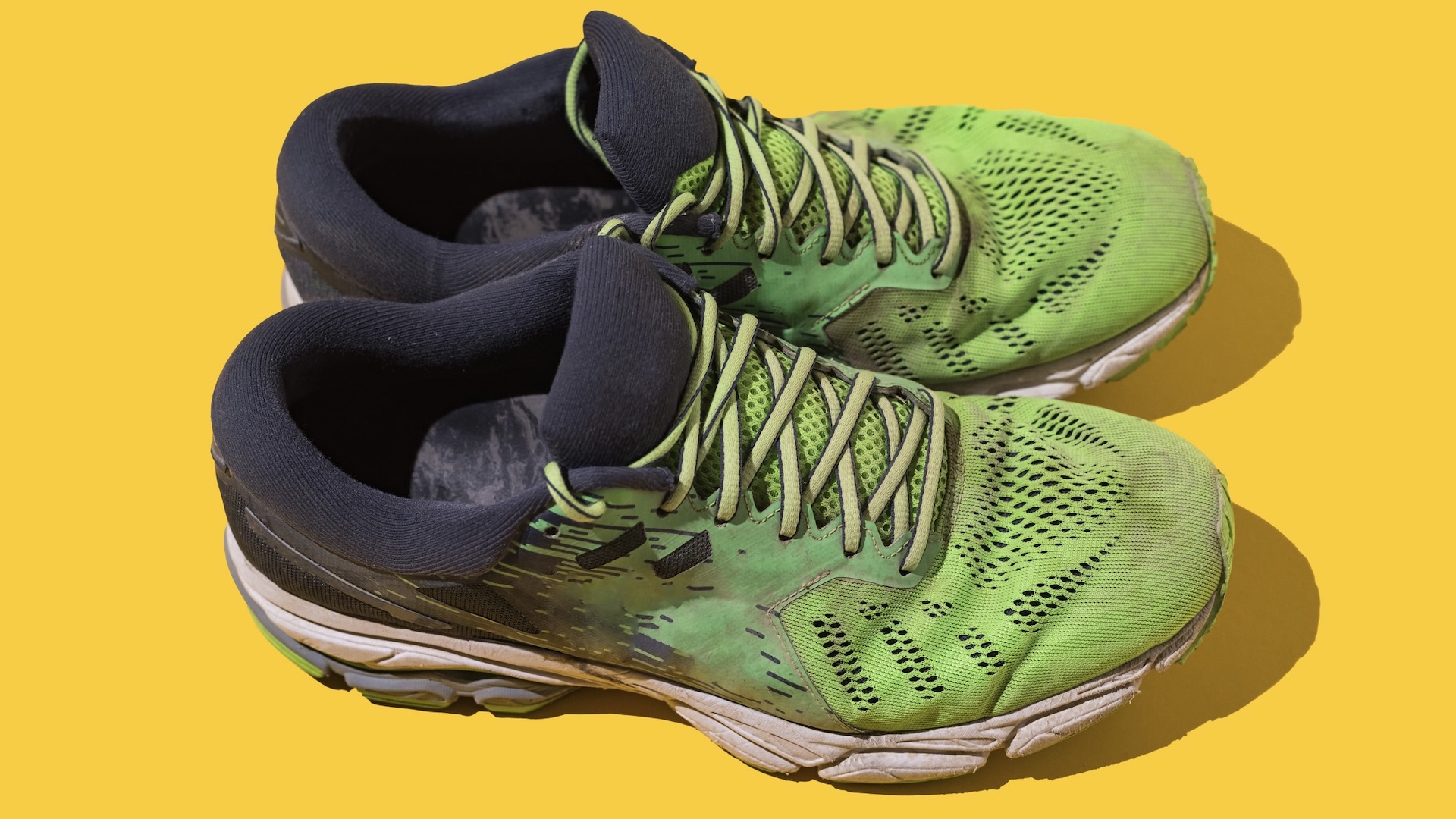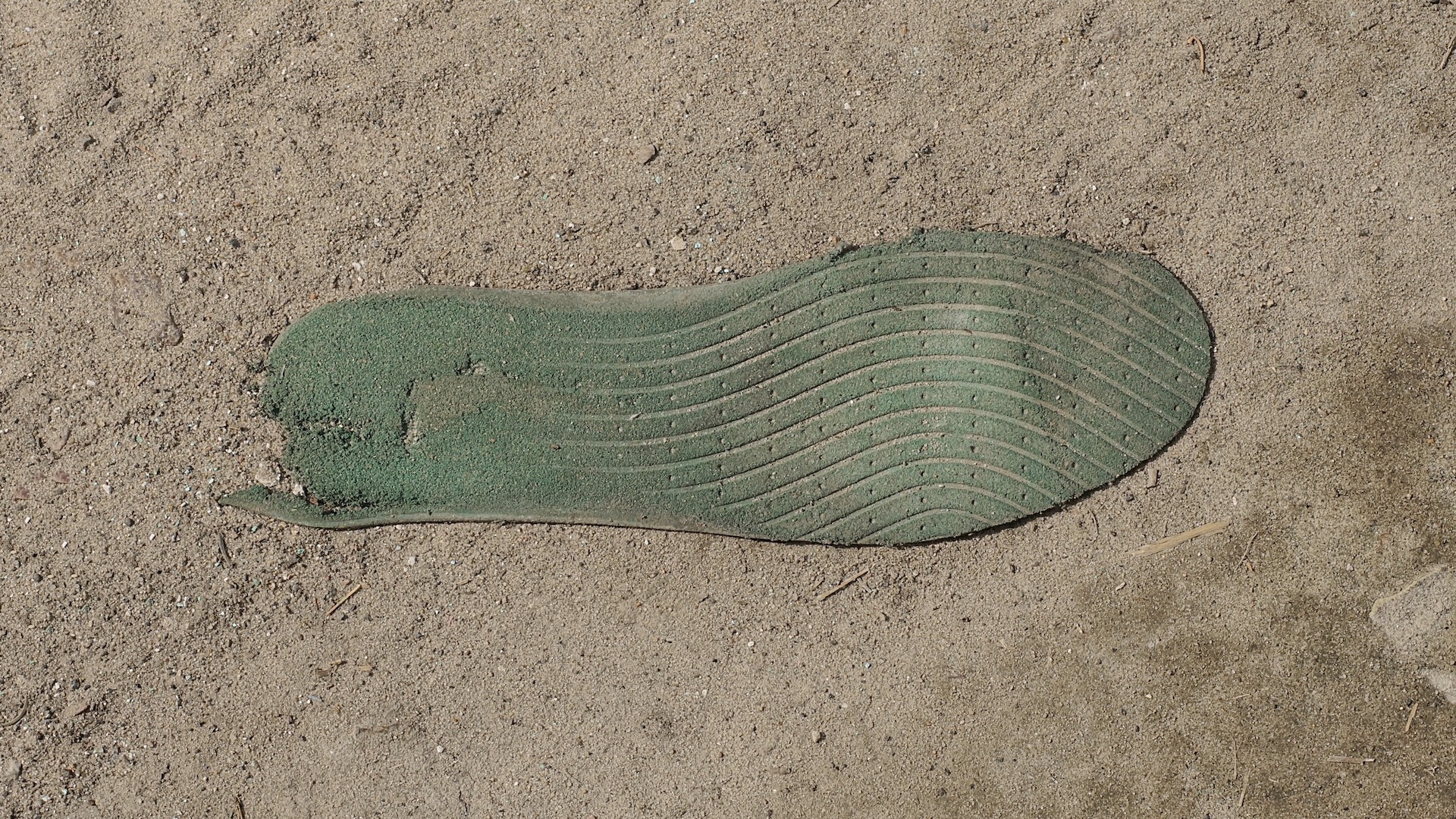How to tell when your running shoes are worn out
What are the key signs that it's time to buy new footwear?

It can be difficult to let go of a favourite pair running shoes. After all, most of us have go-to running footwear because they are comfortable, supportive and give great grip. But there comes a time when shoes wear out and need to be replaced. The question is, how can you tell when you running shoes are worn out?
First, though, let’s consider why we need to make sure we replace our running shoes. Worn-out running footwear will lack adequate support and protection and this, in turn, can lead to various running injuries. A shoe that is very worn on one side, or that has lost its cushioning, can cause imbalances and niggles that can lead to longer-term injuries.

It’s said that the average high-quality running shoe should last between four to six months or 300 to 500 miles, but there are many factors to take into account. We show you the signs to look for when deciding if you need a new pair of running shoes.
Look at the sole
The base of the shoe – called the outsole – is one of the easiest ways to check the wear of your running shoes. If the base is worn so that you can see the inner layer through the base layer, it’s time to buy a new pair.
The lugs – the bits that grip the ground – can show wear, too. If the grip of your trail running shoes is compromised you could lose traction, which can be dangerous on terrain such as mud and rocks.
Look at how the outsole has worn. It might be that the outer or inner edge of the sole has worn more and this could be an indication that you are over or under pronating. If this is the case then you need to mention your gait to the person who next sells you your running footwear.
There are shoes that better suit different running gaits. If you have a shoe suited to your running gait, the chances are it will last longer due to less wear in one area of the sole.
All the latest inspiration, tips and guides to help you plan your next Advnture!
An outsole that is overly worn in one area may lead to extra stress and strain on your joints, especially the ankles and knees.
Take a sideways look at the shoe
Place your running shoe on a flat shelf or bench at eye level so that you can properly assess it from the side. Take a look at the midsole, which is the thick area beneath the heel and midfoot. The anatomy of a shoe is similar in all running footwear.
Is the midsole of your shoe compressed or wrinkled? This part of the shoe is really important for cushioning and stabilizing, and it takes a lot of force, so it will naturally compress over time. A compressed midsole could lead to injuries such as plantar fasciitis, Achilles tendinitis and tibial stress.
If you see a wrinkling or compression in the midsole, it’s likely that is time to replace the footwear because it will be wearing out.

Assess the running shoe from the rear
Again, it’s useful to place your running shoe somewhere that you can easily assess the wear. Now take a look at the rear of the shoe to see what the heel looks like. The heel counter is the firm part of the shoe that sits directly to the rear of your foot.
The heel counter is usually the part of the shoe that hits the ground first the you are running and it needs to offer stability. Consider whether the heel counter looks misshapen or creased.
Now pick up the shoe and try to push your thumb into the heel counter. It should not give too much. If you can push inwards or downwards then it’s probably time to replace your worn out running shoes.
Look at the upper part of the shoe
In some cases, the upper part of the shoe will wear out before the mid-sole, outsole or heel counter. The upper provides protection to the foot, as well as support. Many runners continue to wear running shoes with holes in the upper but this could lead to injuries, or, at the very least, cause irritation.
Holes in the upper will most likely let in small stones and bits of vegetation. Most runners know how frustrating it is to have to stop to remove bits and pieces from inside the shoe. Worse still, without a fully intact upper, you may end up with knocks, scrapes and cuts if you run on rough trails.
Also consider how effective the running footwear is at keeping out the elements. Gore-Tex lined running shoes can lose their waterproofing, while footwear with wear and tear to the upper will let in more water.

What's inside the running shoe?
Wear can occur inside a running shoe. It's important to assess whether the running shoe insole is still in good shape. Does the insole offer good cushioning and support? Does the insole move about inside the shoe?
You could replace the insole to give the footwear a longer life, or if there is other wear in the shoe it might be tome to buy a new pair.
Compare one shoe to another
Another way to tell when your running shoes are worn out is to compare the right and left. Do they both sit in the same way on a flat surface, or does one look like it is at an angle? If so, this could reveal that one part of one shoe is worn out.
When running, you might notice that one shoe feels more cushioned than the other. If so, it’s a good idea to replace the pair. You could end up with a running injury if your gait is compromised by the imbalance of worn running shoes.
Pay attention to discomfort
Perhaps you have run many miles in your favourite running shoes with comfort and ease. Then suddenly, you start to feel a pain in your foot or leg muscles. Or maybe the shoes have started to rub you feet and leave blisters.
If this happens, take a look at the shoes and assess whether they have become worn and this is what is causing you to have discomfort. If this happens, then it could be time to replace the running shoes.
Keep track of your miles
To be on the safe side, it’s worth recording the miles that you run in your footwear. Once you reach the 300-500 mile mark, you should start to keep a closer eye on the condition of the shoes.
A tip is to take a photo when you buy the shoes, then take another after each 100 miles. In doing this, you’ll be able to keep track of the wear and tear over time.
Running shoes wear out differently, and how rapidly it happens will depend on your weight, your running gait and where you run, but the tips above should help you to decide when your running shoes are worn out.
- The best road running shoes: put through their paces

Fiona Russell is a widely published adventure journalist and blogger, better known as Fiona Outdoors. She is based in Scotland and is an all-round outdoors enthusiast with favorite activities including trail running, mountain walking, mountain biking, road cycling, triathlon and skiing (both downhill and backcountry). Aside from her own adventures, Fiona's biggest aim is to inspire others to enjoy getting outside and exploring, especially through her writing. She is also rarely seen without a running skort! Find out more at Fiona Outdoors.
